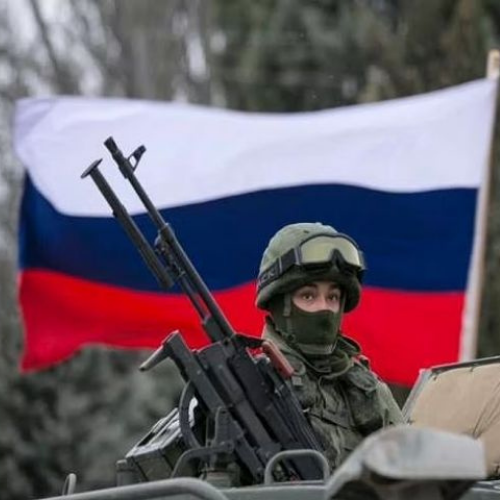Schedule a Chat
Contact Info
Suite 17.03, Level 17
20 Bond Street
Sydney NSW 2000

INSIGHTS WITH EVALESCO
TOPICS DISCUSSED
There is a line from Warren Buffet (one of the world’s richest men) that talks to the power of investing into uncertainty. “Uncertainty actually is the friend of the buyer of long-term values”.
All well and good, however you need to hold your nerve through uncertain times and right now there is a lot of uncertainty.
Markets do not typically react well to uncertainty, and there is no greater uncertainty in life than war. Commentators, investors and likely many in our social circles that have been focused, if not obsessed, by the pandemic seem to have quickly moved on with hostilities now underway in the Ukraine. The pandemic for many is firmly in the rear-view mirror and rapidly diminishing in size.
Understanding where we are
Members of the Investment Committee (IC), that are responsible for maintaining and researching the models you are an investor in, meet with portfolio managers and analysts on a regular basis and also have formal meetings as an IC monthly. In times of uncertainty this load changes, and we spend more time with portfolio managers (those making the investment decisions) and researchers with a view to ensuring that we are fully aware of the decisions being made by managers and considerations for markets more broadly.
This is an important part of the advice process, as having the IC meet with managers, and collating data that relates to asset allocation, risk management and fund manager selection allows your adviser to focus on you, and your priorities and goals.
From these meetings, the IC has come to the view that inflation will continue to persist for the foreseeable future, markets have priced in 4-6 interest rate rises in the US, 1-2 here and supply chains (that are already stretched) can only be further impacted by any conflicts. Good quality investments and the underlying equities will do well in the medium term but this will be a volatile year and we are managing this risk accordingly. It is important to not to overreact when faced with volatility as prices can and will fluctuate as more data becomes available.
Actions taken
The decisions made by the AANAM IC in 2021 to rotate as much of our exposure away from long duration bonds in the AAN Core Model was a good one, as these bonds have fallen in value by 12-15% over the last 12 months whilst those with shorter duration have been largely protected.
Importantly for our retiree or more conservative investors, fixed income fell by a little over 2% in the Core model, half of what would have been the case for investors with long duration only.
Capital security can be a stronger focus in these periods and sacrificing a little upside, while we weather the markets’ squalls and storms, can be prudent. Some of this will be actioned via our quarterly rebalancing where we will reset the asset allocation in your model(s) at the end of March, and where required other portfolio changes will be considered. For now, we are taking in information and not allowing the noise to lead to unnecessary action or turnover.
The bigger picture
For those of you seeking some additional information, there is more to be shared as it relates to the Ukraine conflict. Consider potential contagion impacts of any ‘kinetic’ (you will hear this word used a lot this year – sounds better than physical?) conflict there. We also have an increasingly aggressive Chinese Communist Party whose alliance with Russia has arguably given them both confidence in their ability to annex neighbouring countries. Most people think ‘Taiwan’ when we talk about China annexing neighbours but the Indo Pacific and Australia are certainly seeing the impacts of their increasing aggression. Taiwan has roughly the same population as Australia at 23.6 million versus our 25.7 million – much smaller territory but a substantial democracy.
The Ukraine conflict is complicated but arguably a major factor is that Putin wants access to Europe for his natural gas pipelines and Ukraine is taxing him for that – both Poland and Ukraine charge ‘transit fees’ and do very nicely out of it. Nordstream 2, which sidesteps Ukraine by going underwater, is yet to be turned on and when it does it will only increase Europe’s, especially Germany’s, reliance on Russian gas for energy. German energy policy, with turning off nuclear power plants, is a whole different discussion and makes no sense from an outsiders’ point of view but we still don’t have nuclear here, so can’t really throw any rocks.
A team member in the group, whose husband was born in the Ukraine has a much deeper perspective on the East versus West in Ukraine itself and there are certainly factions in Ukraine that would welcome Russia back.
The Russia-Ukraine conflict can seem a long way away but the world is a small place and Australia has left itself very reliant on trade for many of our basic needs such as technology, pharmaceuticals, oil and building materials. Any conflict can impact on this. Oil prices are already on the rise and supply chain issues are unlikely to ease in this environment.
While economic sanctions may have some impact on Russia, Russia is holding a lot of cards that it can use to inflict economic harm on the world and especially Europe.
Russia is only the worlds’ 11th largest economy (Australia is 13th) but it plays a very big role in trade. For perspective, Russia’s Gross Domestic Product (GDP) in 2021 was $1.48 trillion versus the United States (the largest economy) at $20.89 trillion. It is worth noting that California, Texas and New York each have GDP larger than Russia.
Some statistics that may surprise you
In 2019, Russia was the world biggest exporter of wheat, semi-finished iron, coal tar oil, raw nickel and nitrogenous fertilizers.
Russia also supplies between 40-50% of Europe’s natural gas, which is significant, especially considering it is winter in the Northern Hemisphere. If Russia controls Ukraine, this adds even further to their importance in trade.
So can we ignore geopolitical influences when talking about investment?
In the balance of this article, I will be talking about impacts on markets and unfortunately that tends to ignore the human tragedy. Any conflict has horrible consequences for those caught in it and we have seen that recently as Afghanistan and that continues to unravel.
On the answer to the question above, the answer is yes and no and as per normal, what is already baked into the price.
The no is that there is often a lot of volatility caused by conflict.
Back in 1990-91, in the lead into the first gulf war, markets reacted with a serious correction as you can see below. Iraq invaded Kuwait, oil prices rose and markets dropped – lots of uncertainty.
Under George H W Bush (Sr), the US fired its first missiles on January 17, 1991 and before March it was all over and markets actually accelerated above their previous highs. Uncertainty resolved.
In the second gulf war in 2003, started during George W Bush (Jr) presidency the markets were coming off the back of the Dot.com bubble. Many of you may remember the crash of 2001.
The occupation of Iraq lasted all the way to 2011 but the relative impact on investment markets was even more benign than in 1990. Investors had more certainty on the outcome.
While Russia and Ukraine is the current conflict, there are some good papers that talk to the impacts of ‘shocks’ to the system and a good summary can be found in this article from 2014. War-terror-and-the-markets. This was written in 2014 and quotes the then Ukrainian defence minister on dealing with Syria, Iraq and Libya. International military intervention against the Islamic State (ISIS) began on 13 June 2014.
We do have a lot of data to look at in regards to markets reactions to military shocks going back to 1941 and markets can actually outperform during conflicts.
‘Looking at returns during the Second World War, the Korean War, the Vietnam War and the Gulf War, it found stocks underperformed on just one occasion – the Vietnam War – and even then, equity returns beat bonds and cash.’ (Armbruster Capital, New York)
This can be because the market factors in the worst case scenario before the conflict starts and then the reality is often better.
While our portfolios have seen some reversal this has not reflected some of the real damage done to specific markets. (All data in this section is 1 January 2022 to 22 February 2022).
What is also interesting is since 27 January 2022, most markets have been recovering and over the twelve months are above their 22 February 2021 prices. (The US S&P is still up 10.9% despite the last six weeks.) *We do talk a lot about the US market, but they are now over 65% of the total market so have the biggest impact.
I could provide many other statistics, but the major take out is that historically, conflicts while appalling for those caught in them, tend to only have short term impacts on investment markets. The move of Russia on the 22nd February (our time) actually provides less uncertainty and markets can react positively to it.
As always, if you would like additional information or require some guidance as to how this might impact you or your portfolio, we strongly encourage you to speak with your adviser
Regards,
Marshall Brentnall, and the AAN Investment Committee
SHARE OUR INSIGHTS
Share on Facebook
Share on Email
Share on Linkedin

NEWSLETTER

Evalesco Financial Services Level 17, 20 Bond Street Sydney NSW 2000
Phone: (02) 9232 6800
The information provided on and made available through this website does not constitute financial product advice. The information is of a general nature only and does not take into account your individual objectives, financial situation or needs. It should not be used, relied upon, or treated as a substitute for specific professional advice. We recommend that you obtain your own independent professional advice before making any decision in relation to your particular requirements or circumstances. Evalesco Financial Services do not warrant the accuracy, completeness or currency of the information provided on and made available through this website. Past performance of any product discussed on this website is not indicative of future performance. Copyright © 2019 Evalesco Financial Services. All rights reserved